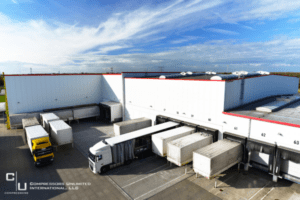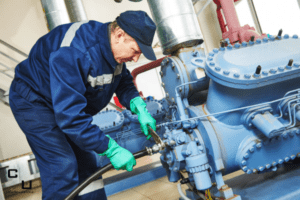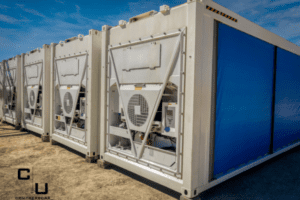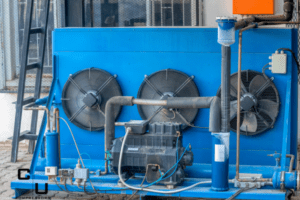Have you ever wondered about how cheese makes the journey from the farm to your table?
Americans love cheese. In 2018, the U.S. Department of Agriculture reported the average American consumed approximately 15 pounds of American cheese alone. The average person could also be expected to eat about 22 pounds of non-American cheese, including pizza mainstays like mozzarella.
In fact, the numbers suggest mozzarella is now unassailable as America’s #1 cheese.
Believe it or not, these numbers are far from an all-time peak. In fact, processed cheese sales had already been in decline for three years at the time of the 2018 report. However, few other foods engender as much passion as cheese. With the possible exception of bacon, most foods can scarcely aspire to such intense devotion.
Knowing all that, the work that goes into cultivating and delivering cheese is even more impressive.
From Milk to Cheese, Refrigeration is Indispensable in Dairy Production
It takes more than 10 pounds of milk to develop one pound of cheese. In Wisconsin, the state with the highest level of dairy production, farmers produce over 23 billion gallons of milk every year. Cheese can travel out of refrigeration for short distances, but like milk, it is best refrigerated at 40 degrees Fahrenheit or less.
This makes refrigeration one of the most important considerations in any dairy operation.
It’s no surprise that all milk must be stored in chilled containers before being transferred onto refrigerated trucks for processing. The throughput of any one dairy farm is limited by its ability to refrigerate the day’s milk in the hours before that journey begins. But refrigeration also plays a major role in cheese cultivation.
The process of turning milk into cheese involves intentionally curdling milk under controlled conditions. The bacteria introduced to the milk helps to determine the color, texture, and flavor profile of the cheese, but so does the type of animal the milk came from, its diet, and how the cheese was processed.
Since the evolution of milk into cheese is essentially a type of fermentation, it relies nearly as much on the controlled use of heat as on refrigeration. Cutting, stirring, heating, draining, and salting all occur at different phases in the cheese journey. But when all is said and done, cheese ripening occurs.
The Cheese Ripening Process Remains a Major User of Refrigeration Technology
Ripening, also called maturation, brings about the chemical changes to transform fresh curd into a meal-ready cheese product. This calls for a controlled environment with high humidity and a temperature range of 45-55 degrees Fahrenheit. Refrigeration equipment must be designed to control both these factors.
Cheesemaking hobbyists have long noted that cheese can be made right in a standard consumer refrigerator under the right circumstances. There are even online FAQs on creating a homemade cheese cave. But an easy job for a hobbyist is a major logistical undertaking when the goal is hundreds of pounds of cheese.
While a consumer refrigerator may cost anywhere from $90 to $350 per year to operate, dairy farmers operate cooling chambers that can be two, three, or four times the size. To accommodate all this demand efficiently, they need refrigeration systems backed by the best commercial compressors on the market.
Copeland Commercial Compressors Provide Reliability and Performance for Dairy Farms
Among American compressor brands, few are as trusted by the dairy industry as Copeland.
From initial milk collection and storage to transportation, processing, and ripening, Copeland compressors can be found in every link in the dairy supply chain. Over the last several years, a number of Copeland commercial compressor models have won the loyalty of dairy producers with their superior performance.
One product that stands out is the Copeland 4DK3250ETSK.
Part of the Copeland 4D line, this compressor offers 25 nominal horsepower, and 120 oil charge with relatively low shipping weight of about 445 pounds. In fact, Copeland’s 3D, 4D, and 6D compressors have grown into some of the most common, if not the most common, compressors in the dairy industry.
Dairy farmers trust Copeland compressors for their reliability and serviceability. Maintenance is streamlined and many repairs can be completed in a matter of minutes. This ensures that, if refrigeration starts to decline in a milk chiller or a ripening room, service can be restored before too much valuable product is lost.
Copeland’s ability to pack substantial cooling power into a modest footprint allows the equipment to be moved and configured throughout a dairy property, making the best use of the available land. And remanufactured Copeland compressors can be so affordable that it is possible to maintain a stock of them for fast replacement.
The next time you enjoy a cold glass of milk or a grilled cheese sandwich made with authentic American cheese, remember Copeland: One of the unsung heroes behind it all.












